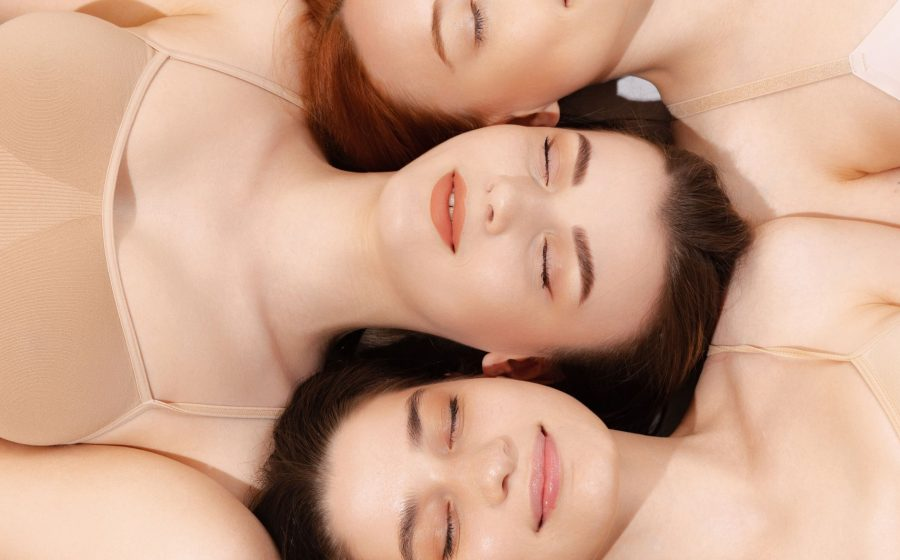
Stretch marks on the stomach – how to effectively remove them?
Stretch marks are small lines that appear primarily on the abdomen, thighs, breasts or hips. Most often they are a visual testimony to the transformation through which the body passed during pregnancy or changes in body weight. And while they are harmless from a medical point of view, they can be a source of frustration and reduced body confidence. Fortunately, nowadays we have a number of methods and techniques that can significantly reduce their visibility.
Stretch marks, these undesirable signs on the skin, are more than just an aesthetic problem. They are a physical testimony to changes in skin structure, affecting a wide spectrum of people – from pregnant women, through adolescents, to bodybuilders and people experiencing rapid weight changes. Although widely regarded as a typically female problem, reality shows that stretch marks are not gender specific. Their appearance can be both the result of natural physiological processes or the result of some diseases. How our skin reacts to constant stretching depends on many factors, including genetics and hormonal changes.
Stretch marks – how they arise and what are the causes
Stretch marks, medically known as striae distensae, are formed by stretching of the skin. This process includes changes in the amount and arrangement of collagen and elastin and a reduction in vascularity in this area. The skin, which is our largest organ, shows an amazing ability to stretch, thanks to the presence of collagen and elastin fibers. However, when this process is too intense or is accelerated, e.g. as a result of rapid weight gain, changes may occur that lead to the formation of lines on the surface of the skin, visible as spindle-shaped bands, different from the surrounding skin.
Phases in the development of stretch marks
Stretch marks develop in three main phases:
Phase I – during this phase, numerous red and slightly raised lesions appear, of various lengths and widths, referred to as striae rubrae – red stretch marks (lasts about 3 months);
Phase II – stretch marks turn blue-red and tend to lengthen;
Phase III – a gradual transformation into striae albae occurs – white stretch marks, changes whiten and then become atrophic.
Causes of stretch marks
Stretch marks are formed as the result of numerous changes related to skin tension and overload. This situation can take place in different life circumstances and be the result of many internal and external factors. The key ones, in which the risk of stretch marks is particularly high, are:
- pregnancy – stretching the skin during pregnancy is one of the more common factors leading to the appearance of stretch marks;
- puberty – rapid changes in the body of adolescents including rapid growth, both in girls and boys, can lead to the formation of stretch marks due to the rapid stretching of the skin;
- weight fluctuations – rapid weight gain can stretch the skin, leading to stretch marks;
- high level of steroid hormones – during pregnancy and puberty, the amount of steroid hormones increases, favoring the formation of stretch marks. Other causes of their growth may be chronic stress, the use of corticosteroid drugs or Cushing’s syndrome;
- bodybuilding and intense training – a sharp increase in muscle mass stretches the skin, which can cause stretch marks;
- genetic conditioning – variants of some genes may increase the risk of stretch marks, so their inheritance may increase the likelihood of these unexpected changes.
Methods of reducing stretch marks – a guide to modern aesthetic medicine treatments
Although stretch marks do not pose a health risk, many people look for effective methods to minimize them. Thanks to the use of current technologies and treatments, there are good chances to reduce and improve the aesthetics of places where stretch marks occurred. We will look at the most effective procedures for eliminating stretch marks, used in Dr Szczyt Clinics.
Laser reduction of stretch marks visibility
Modern laser therapies are one of the most promising methods of fighting stretch marks, thanks to their ability to precisely target and regenerate the skin at the right level. A non-ablative fractional laser, such as Clear Lift, stimulates the reconstruction and production of new collagen in the deeper layers of the skin, without damaging its outer layer. The result is to improve the quality of the skin, which makes stretch marks less visible.
Platelet-rich plasma
The use of platelet-rich plasma (PRP) is a method that involves injecting a patient with a preparation obtained from their own blood, rich in platelets, growth factors and various proteins. This treatment increases skin elasticity by stimulating changes in the extracellular matrix and stimulating collagen production, which consequently reduces the visibility of stretch marks.
Micro-puncture of the skin
The method of micro-puncture of the skin, stimulates natural regenerative processes. The treatment supports the reduction of stretch marks and skin reconstruction by increasing the production of collagen and elastin.
The key to effective treatment of stretch marks is an individual approach, tailored to the needs and goals of each patient. Although it is impossible to completely remove stretch marks, the methods and technologies available offer a significant improvement in their appearance, improving the aesthetics of the abdomen and helping to regain confidence.
Similar posts

FUE method – what is it and is it possible to recover lost hair?

Rhinoplasty – removal of a defect or deformity of the nose
